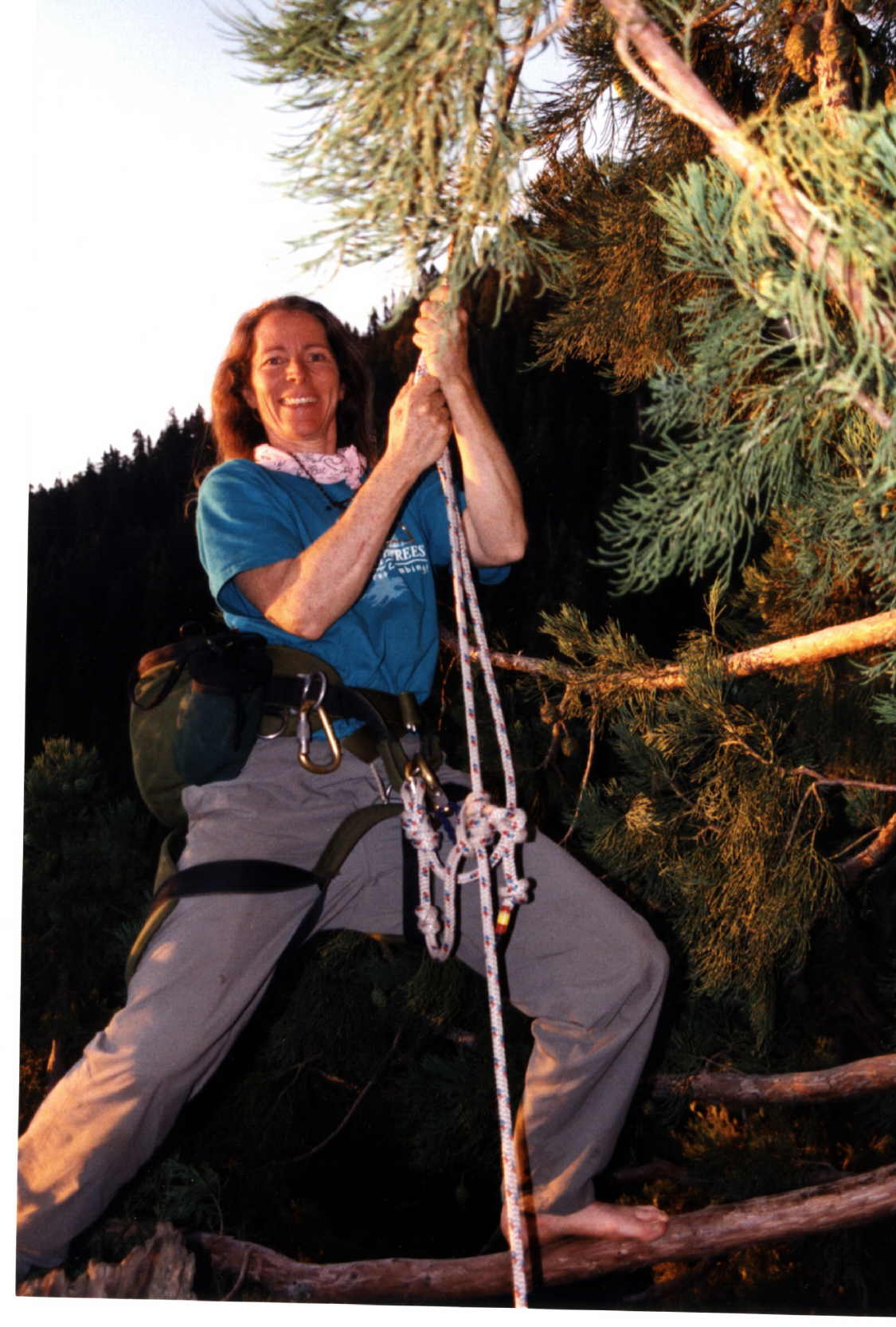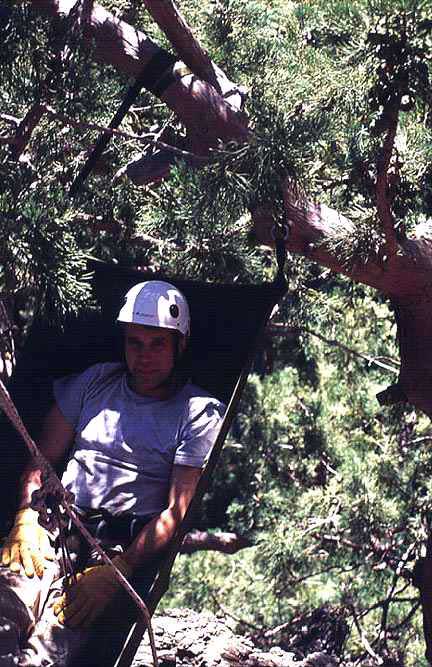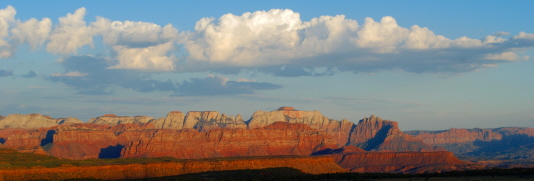
Peter Jenkins has climbed just about every type of large tree that grows in the southeastern United States, sometimes to lop off a limb that threatens an electrical line, other times to rescue a cat or a pet parrot or iguana or boa constrictor. A certified arborist, he even once rescued a man who climbed into a tree after his cat. That’s not to mention the three activists who Jenkins brought back to earth after they became treebound while preventing a bulldozer from taking down an old tree.
But this particular assignment for “Treeman,” as Jenkins is fondly known in certain circles, is a little different. His client wants him to hang between two giant sequoias in a grove near the edge of Sequoia National Park, like a piece of laundry 200 feet above the ground. It might be daunting for most people, but not for Jenkins, who climbs trees not just for work but for fun, too. Nonetheless, on this sparkling summer day, his first attempt to get up the tree is not auspicious. Giant sequoias can top 250 feet, with their lowest branches often appearing 100 feet off the ground. Jenkins refuses to use leg spikes to climb up the tree for fear of injuring it; that’s not the way, he believes, to treat one of the world’s largest and oldest living organisms.
He pulls out a bow and threads an arrow, which is attached to a fishing line spooling from a spinning reel mounted on the bow. On his fourth shot, the arrow arcs over an immense branch and falls back to earth. He attaches a yellow, polypropylene line to the fishing line and pulls it up over the branch. Then he uses the yellow line to pull his heavy 3/8-inch static climbing rope into place. He ties one end securely to the base of a nearby fir tree.
Jenkins squints in the afternoon sun, trying to follow the black rope snaking up high above his head. He looks a little worried, but his voice has the soft-spoken authority of a man who does dangerous things routinely. “A sequoia’s looks are deceptive,” he says. The tree’s branches are brittle and his rope may be hanging on a pencil-thin branch or snag that won’t support his weight. With a carabiner, a small oval shaped locking device, he attaches his harness to a small metal ascender, a tool resembling a red staple gun. Attached to the rope, its teeth work like a ratchet, locking into the rope with any downward pressure, but free to move upwards. This ascender is attached by a thin bungee cord to another ascender placed beneath it. Stirrups dangle from the lower ascender. Climbing is a slow two-step: Jenkins stands in the stirrups, taking his weight off the top ascender, which he then pushes 18 inches up the rope. Then he sits back in his harness, relieving the pressure on the lower ascender, which automatically advances upward, pulled by the bungee cord. Jenkins then stands and begins the process again, a motion he will repeat hundreds of times.
Suddenly, three sharp cracks interrupt the dance. Jenkins, six feet off the ground, falls unceremoniously to the forest floor. Three small branches spiral down from above. In a flash, he’s on his feet, swatting at the air, which has suddenly clouded with angry yellow jackets. Encumbered with equipment and locked to his rope, he can’t escape the nest.
Long seconds pass before he manages to clamber uphill and away from the insects. Jenkins is lucky, suffering only one sting on his wrist. After a few slugs of a homemade molasses drink, he starts the climbing process again on the other side of the tree. Within 20 minutes, he’s standing on a branch about 100 feet off the ground. He will climb another 100 feet and rig a rope that will stretch between this sequoia and a second, 60 feet away. Jenkins will dangle from the middle of this rope 200 feet off the ground, striving to keep his video camera steady.
An equally remarkable scene emerges a hundred yards up the hill beneath another sequoia, a tree so monumental that it soars high above Jenkins. Two helmeted men hold the limp frame of 60-year-old Toshiko Hikosaka, whose broad smile lights up her face. A rope leads from her harness, shooting upwards and disappearing into the canopy. With encouragement from a team of climbers, she is about to scale the 243-foot tall Stagg sequoia. She has trained three years for this day, working to overcome the paralysis that has left her with only limited use of her arms and legs. Hikosaka’s attempt is something of a mile-marker for the burgeoning recreational sport of tree-climbing, an activity that its participants say celebrates the soul as well as the body. Should she reach the top, it will show that tree-climbing is open to all people.
Jenkins was a natural choice to ask for help when a documentary filmmaker sought to record Hikosaka’s climb. As the founder of Tree Climbers International (TCI), a group that now boasts about 600 members dedicated to the childhood joys of going out on a limb, Jenkins is considered the father of recreational tree climbing with technical equipment. From tulip poplars in North Carolina to beeches in England to baobab trees in Botswana, TCI members follow the motto: “Get High—Climb Trees.”
It all started, says Jenkins, during a 1978 visit to his parents’ house in Dallas, when an ice storm broke limbs on trees across the city. He decided to become a tree surgeon, though his only training was as a recreational rock climber. Back in Atlanta, where trees are generally much taller, he realized there might be more to his new vocation than he thought. Over time, Jenkins married his rock climbing skills to more conventional tree surgery techniques, such as proper pruning and tree care. “My clients would come out of their houses and comment on how much fun I seemed to be having up there,” he says.
In 1983, he began offering free lessons two Sundays a month on a sliver of land 20 minutes from downtown Atlanta in a pair of 100-year-old white oaks. Soon, he had given them names: Dianna and Nimrod. (Jenkins has already planned for his ashes to go into a hollow at the base of Nimrod.) In the last 19 years, Jenkins calculates that he’s taught some 10,000 people how to climb trees, from birthday partiers and cub scouts to advanced climbers, to whom he has confided the tricks of “tree surfing.” Jenkins grins grows wide as he describes how a tree can become a wind-powered amusement ride on a blustery day. “White pines have the most whip,” he says. “You’re at the top of the tree looking out over the canopy. You can see these trees bending, the big gusts of winds coming towards you. And then when it hits, it roars, and the ride begins.”
One person whom Jenkins turned on to tree climbing was John Gathright, the organizer of the Japanese film expedition. Gathright, a columnist for three Japanese newspapers and television commentator at NHK, founded the Tree Climbing Japan school and even built a liveable tree house out of barrels that once contained miso and soy sauce, on the grounds of a Buddhist temple in Seto, Japan. It was there three years ago, that he got to know Toshiko Hikosaka. “She was a frail woman in a motorized wheelchair,” he reports, “with only limited movement of her arms.” She told him that she used to dream about walking, but no longer did so. In a moment of emotion, he told her, “I promise that you can climb a tree.”
Over the next three years, not only did she begin climbing trees, but her improved body strength enabled her to dream even bigger dreams. She set her sights on spending the night in the crown of the giant Stagg tree, a notion that even gave Gathright pause.
The night before her climb, Hikosaka tells me people look down on her in her wheelchair. High in a tree, she says, she can look down on them. The next day, Gathright helps carry her down the trail to the base of the tree. After donning her gear, she ascends, inch by painstaking inch with Gathright climbing alongside.
A little more than four hours later, Gathright and Hikosaka, tired but triumphant, reach the top and settle down for the night. Jenkins hears the cheers of the climbers floating out of the canopy over the hillside. “I marvel at Hikosaka’s determination,” he comments. Aloft, Hikosaka tells Gathright: “I could live here my whole life and never come down.”
Over the years, recreational tree climbing has evolved, borrowing tools and techniques from arborists, cavers, rock climbers and archers. Today, strive to leave all trees unharmed, doing most of their climbing not on the tree, but on the rope. Gaffs, the leg spikes used by telephone repairmen, are shunned. Ropes are placed carefully so they don’t cut into branch crotches. Straps or pieces of flexible pipe, known as cambium savers, go over the tops of branches of most trees, especially thinned-skinned sycamores, beeches and maples, to prevent damage. Locations of favorite trees are carefully guarded to prevent their overuse. “You can kill a tree with too many climbers and the wrong climbing technique,” says Jenkins.
TCI’s gained nationwide attention in the late 1980s when essayist and author Robert Fulghum declared himself a dues-paying, card-carrying member of TCI in his book, It Was on Fire When I Lay Down On It. Climbers are fond of quoting Fulghum’s Zen-like pronouncement that tree climbing “is an attitude, a place to be, rather than something to do.” Indeed, to most enthusiasts, it’s not important how high you climb. “A lot of people assume that it’s a thrill sport or a test of physical athleticism, but it’s really not,” says Sophia Sparks, whose company, New Tribe, manufactures specialized tree climbing gear. “There is certainly a huge thrill to be up in some of the tallest, oldest trees, but you can get the same rich, warm feeling from even your backyard apple tree.”
These days, Sparks and her partner, Tom Ness, have trouble keeping up with orders. The company’s signature item is the Treeboat, a hammock designed for spending the night suspended aloft that sells for $115. Mosquito netting, rainfly, panniers for equipment, and a single blanket designed for two are optional extras.
The development of technical tree climbing equipment has benefited biologists who study canopy habitats, which, they believe, are one of the last terrestrial frontiers and may contain nearly half of all life on the planet. Until fairly recently, the canopy has been largely inaccessible to researchers, but, aided by the new climbing equipment, scientists, such as Alaska Pacific University’s Roman Dial, have developed ways of climbing from tree to tree without returning to the ground. Dial envisions spending ten consecutive days aloft, taking measurements through half a mile of treetops.
“However, many canopy scientists,” says Steve Sillett, an associate professor at Humboldt State University, “are very concerned that recreational tree climbing could have negative impacts on sensitive communities of plants and animals that live in the canopy.” While the giant sequoias may be less vulnerable to tree climbing than other old growth trees (and most are on government land, where climbing them is prohibited), the Pacific Northwest’s Douglas Fir forests wear moss mats on their branches, which themselves harbor a great diversity of life and are extremely easy to dislodge.
And Geoffrey “Jess” Parker of the Smithsonian Environmental Research Center worries that recreational climb-ers “will succumb to Mount Everest syndrome: needing to climb the tallest, the fattest, the oldest trees and ruin the canopy habitats before the scientists have a chance to investigate them.”
At 243 feet tall and probably close to 2,000 years old, the Stagg tree grows on private property. (The owners gave permission for the expedition to climb it.) Genevieve Summers, the safety chief for the film crew, agrees to take me to the top.
I pull myself up the rope with hard, jerky movements, and I’m out of breath in moments. Summers, on the other hand, seems to glide up the rope, impervious to gravity. After a while, I settle into a slow but sure pace and even begin to enjoy the view and fresh breeze. At 100 feet off the ground, Summers asks if I want to do some tree dancing. Before I have a chance to answer, she pushes off from the trunk, whirling like a marionette cut from all but one string. I join her and our child-like cries of “whee” change in pitch as we swing.
As we climb higher, the bark goes from a spongy, two-foot thick cinnamon, which protects the base against fires, to a harder, thinner gray, auburn and tan. I find myself inexpressibly moved by the majesty of the giant sequoias, which John Muir described 100 years ago as “lonely, silent, serene, with a physiognomy almost godlike.”
After 90 minutes of climbing, we reach our “room” for the night, a gnarled, sculptural cathedral of dead wood, created, perhaps, by a lightning strike or windstorm. With a haul line, we pull up our sleeping bags and gear and stow them in the cathedral. Then, with the setting sun glowing golden in the distance, I join Summers on a thick branch as we read from The Attentive Heart: Conversations with Trees, essays by Buddhist environmentalist Stephanie Kaza: “All night the trees have been conversing under the full moon, weaving me into their stories, capturing my dreams with their leaning limbs and generous trunks. Breathing together as I slept, as they rested, we danced quietly in the summer night.”
A gust of wind catches the pages and she loses her place so we sit quietly, listening only to the breeze murmuring through the needles, the giant tree occasionally groaning softly beneath us as the sun dies behind the ridge. Unlike the mountains I’ve climbed, this thing is alive. It moves gently, slowly, solemnly in the wind.
Later, we eat peanut butter and jelly sandwiches, apples and energy bars in the surreal light of our headlamps. We turn in locked to our ropes, a comforting, if not comfortable, requirement. Between snatches of sleep, I watch the night sky go from a milky lavender to matte black. Sometime in the night the wind kicks up, stirring up latent anxieties, but the morning is clear and still, punctuated only by a lone yellow jacket that has somehow found its way to our perch.
To return to the ground, we clip into a rappelling device called a rack, which supplies friction to the rope, slowing one’s descent. Thread the rope incorrectly and I’ll plunge 240 feet in seconds. No one can recall it happening—there’s an “idiot bar” to guide you—but that doesn’t make me any less nervous. We slip slowly through the crown of branches. I linger at 100 feet to enjoy the valley view, then at 50 for one last pendulous dance.
When I reach the ground, I stop for last look back at the tree’s monumental trunk. For the first time I fully understand Jenkins’ reaction to the cutting down of Georgia’s largest American beech tree to make way for an office apartment complex. “It was like losing an elderly friend,” he had said, “who used to wrap her arms around me.”

|
 Jim Morrison
Jim Morrison
 Travel
Travel
 Culture
Culture
 Sports
Sports
 Environment
Environment
 Business
Business
 Bio
Bio
 Photos
Photos
 Links
Links
 Contact
Contact
 Blog
Blog
 Travel
Travel Culture
Culture Sports
Sports Environment
Environment Business
Business Bio
Bio Photos
Photos Links
Links Contact
Contact Blog
Blog
 Travel
Travel Culture
Culture Sports
Sports Environment
Environment Business
Business Bio
Bio Photos
Photos Links
Links Contact
Contact Blog
Blog